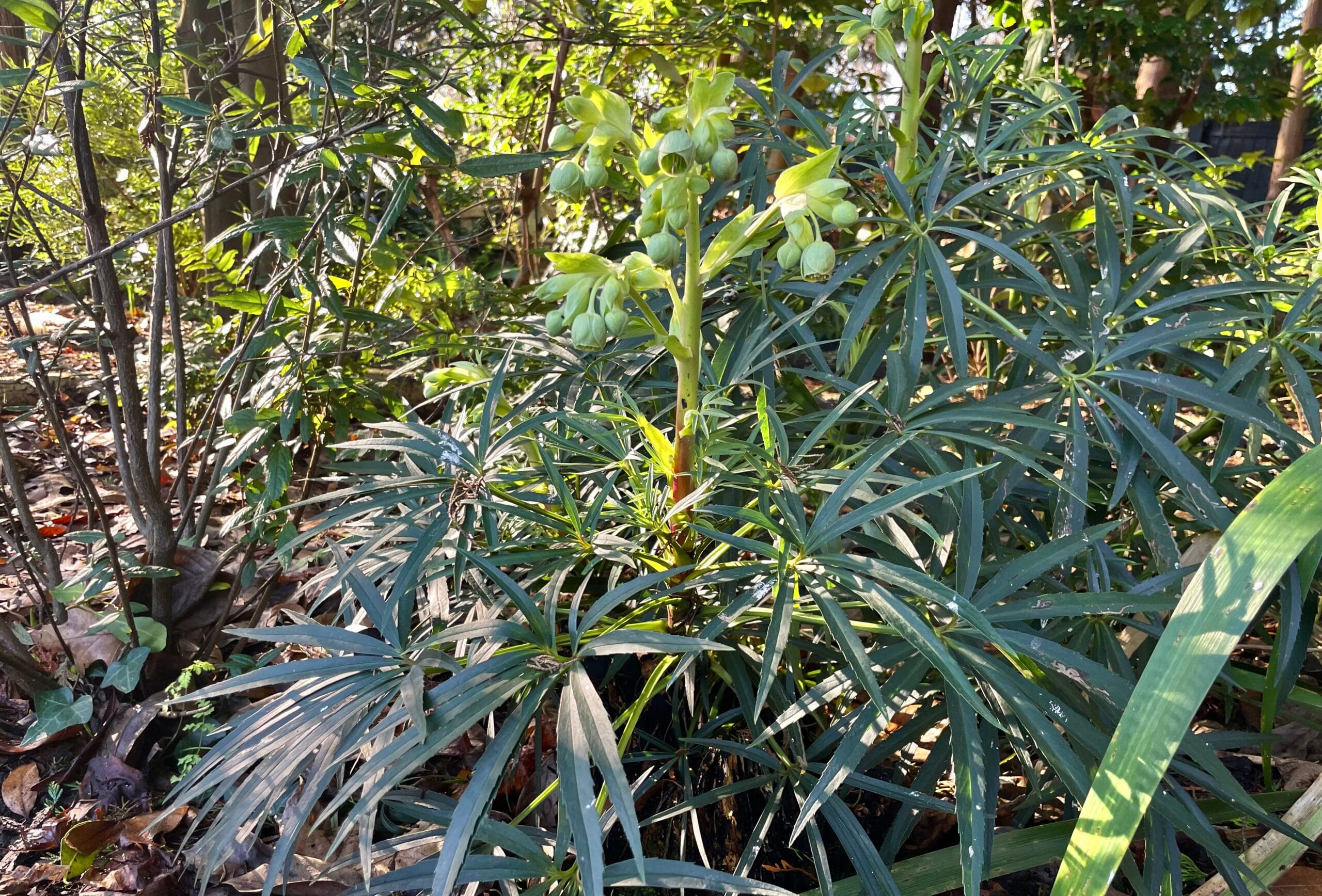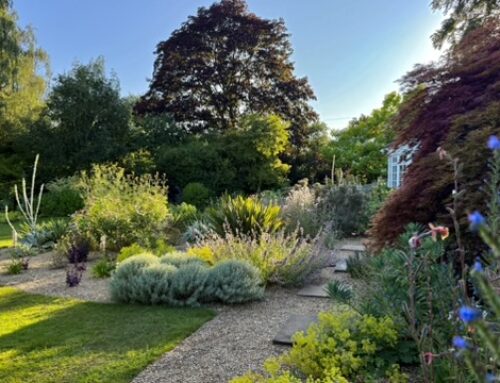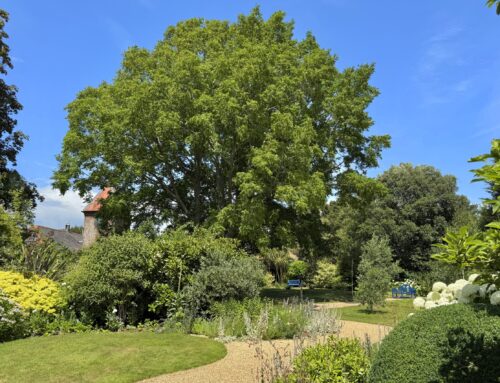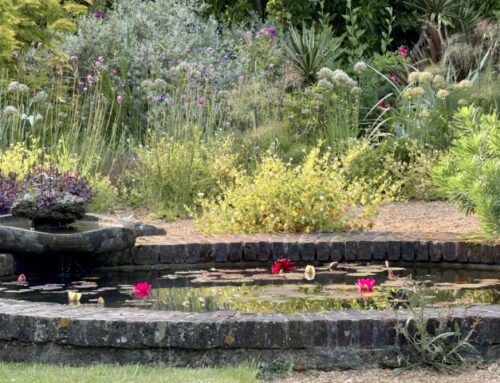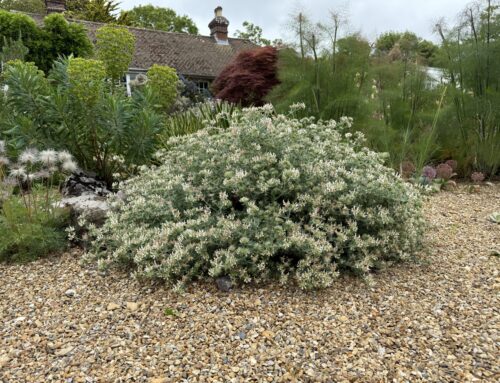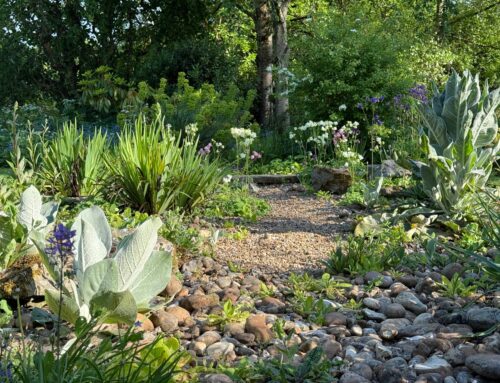Both John Brookes and Joyce Robinson enthusiastically included hellebores in the Garden for winter interest, and there are several species in the Garden that are either blooming now or will do so in the next few weeks.
All make beautiful displays, but (in my opinion) the most wonderful is the Stinking Hellebore, or Helleborus foetidus, an evergreen perennial that is native to Great Britain and Ireland. Its name is somewhat misleading as it is only when the leaves are crushed or cut that they emit an unpleasant odour.
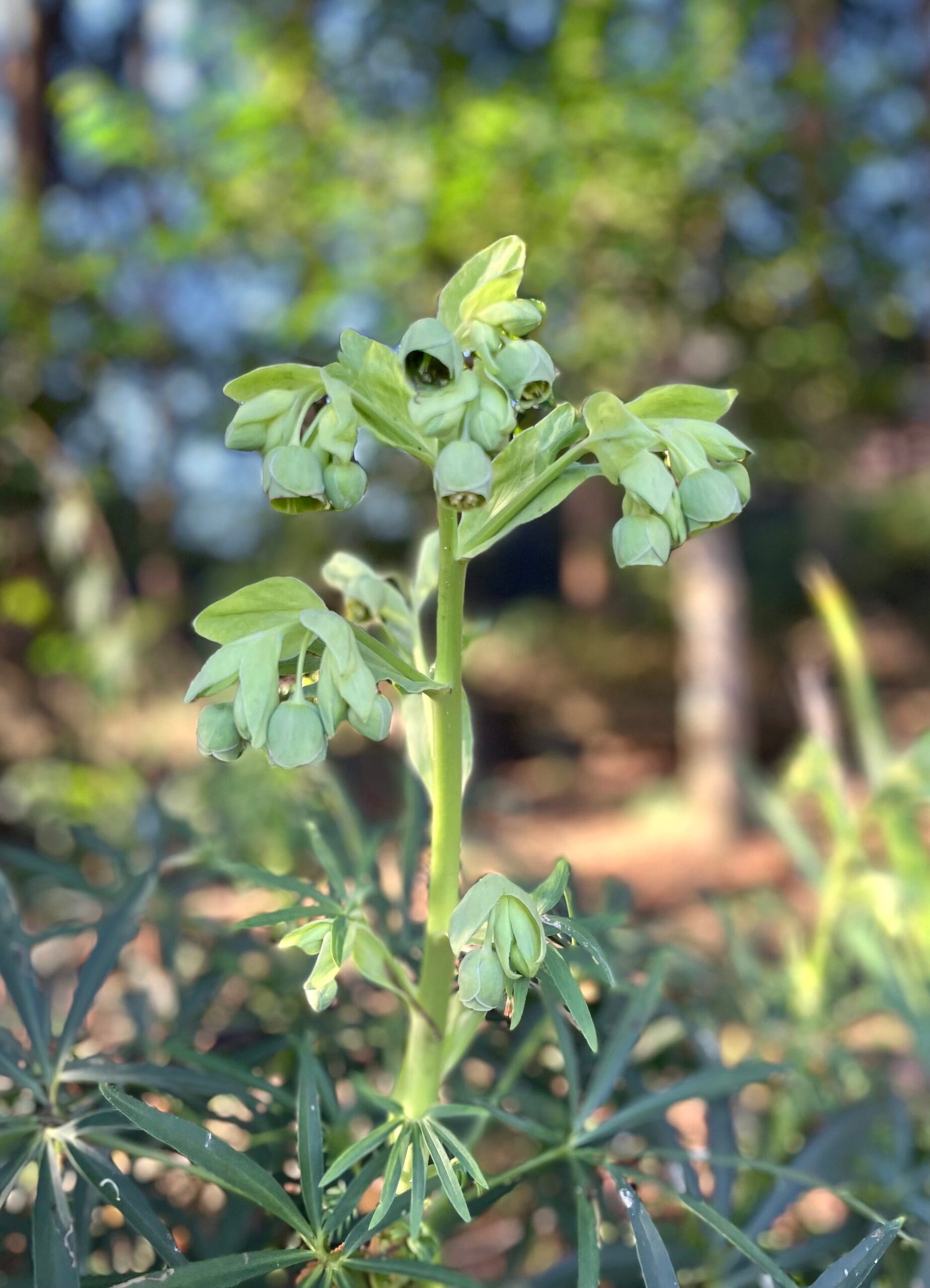 This hellebore has striking, elegant leaves that are lovely year-round unlike some forms like H. orientalis, which have leaves that often become tattered and collapse in winter and must be removed as their flowers emerge. Fingerlike and slightly toothed, the Stinking Hellebore’s leaves are a dark green tinged with blue that created layered mounds up to 2 feet tall when well established.
This hellebore has striking, elegant leaves that are lovely year-round unlike some forms like H. orientalis, which have leaves that often become tattered and collapse in winter and must be removed as their flowers emerge. Fingerlike and slightly toothed, the Stinking Hellebore’s leaves are a dark green tinged with blue that created layered mounds up to 2 feet tall when well established.
In winter, chartreuse stems appear, bearing clusters of nodding chartreuse flower-like bracts tinged with burgundy that persist until late spring. The tiny flowers inside the bracts are almost unnoticeable. As Mrs. Robinson wrote, ‘with a ground cover of the small, variegated arum leaves, always make a wonderful picture – but with a few early snowdrops and clumps of golden aconites, it is even better’. They also look stunning with combined pink, purple, and blue bulbs or flowers.
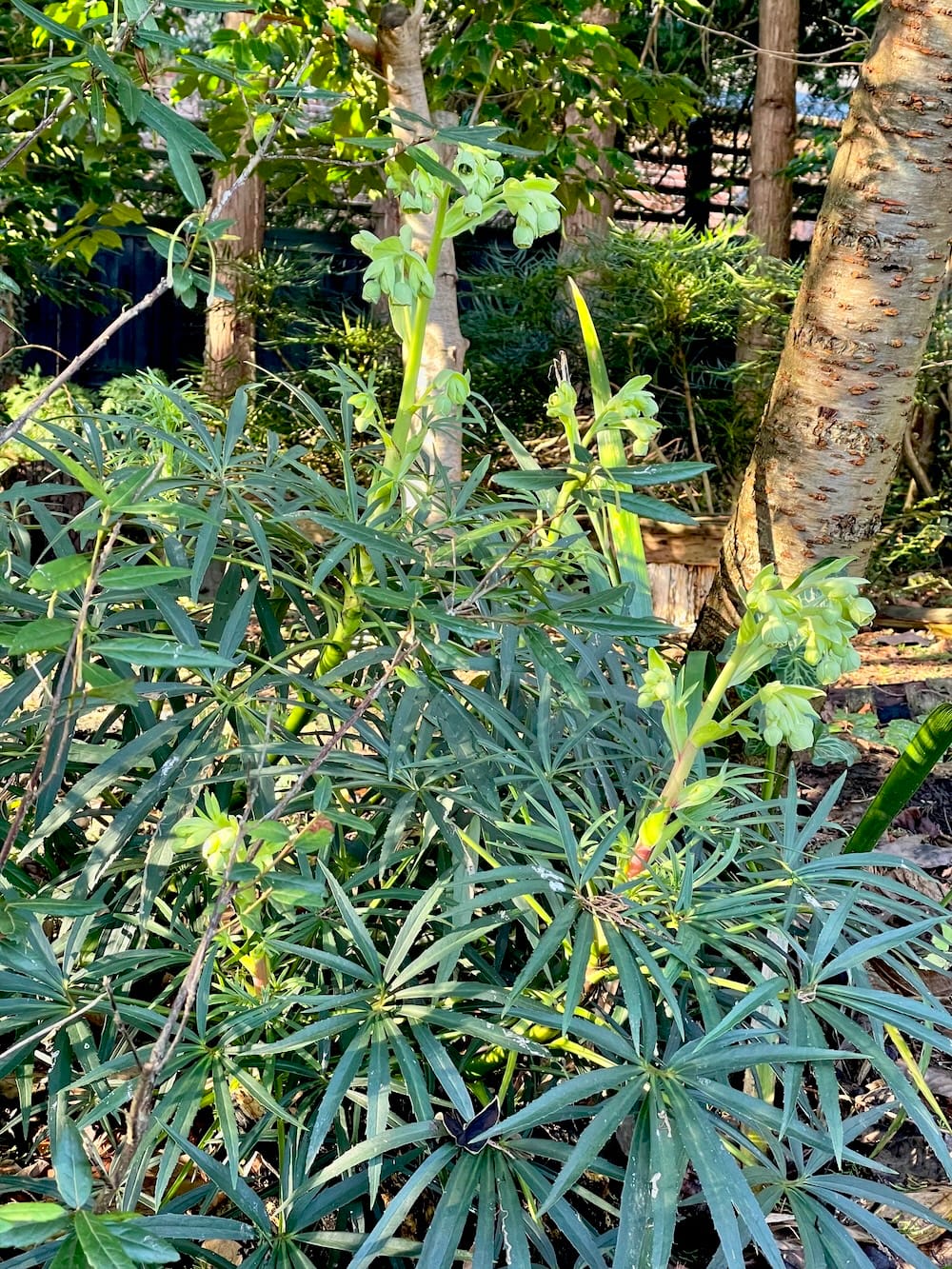
The Stinking Hellebore is low-maintenance and thrives in organically rich well-drained soils in part to full shade and, once established is relatively drought tolerant. Though they tolerate temperatures of -23.3°C (-5°F) they do better with protection cold winter winds which may cause their leaves to scorch if not insulated by snow cover. They grow slowly, taking up to three years before flowering, and will self-seed once they are established, creating a rich, naturalised ground cover that contrasts perfectly with ferns, some shade-tolerant grasses, and broad-leafed plants like hostas or bergenias.
Genus name ‘Helleborus’ is derived from the Greek words bora meaning “food” and ‘helein’ meaning “injures/destroys” in reference to the plant’s toxic leaves, stems and roots which are poisonous to humans if ingested and therefore also deer resistant. More obviously, the specific epithet ’foetidus’ means fetid.

